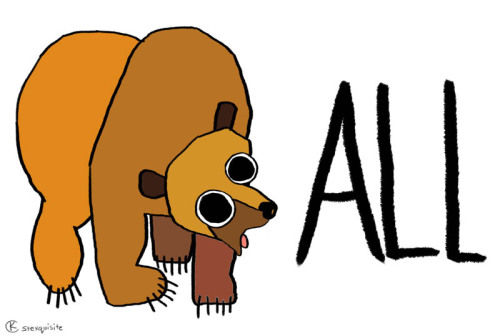A Space Odyssey: 21 Years Of Searching For Another Earth
A Space Odyssey: 21 Years of Searching for Another Earth
There are infinite worlds both like and unlike this world of ours. We must believe that in all worlds there are living creatures and plants and other things we see in this world. – Epicurus, c. 300 B.C.

Are we alone? Are there other planets like ours? Does life exist elsewhere in the universe?
These are questions mankind has been asking for years—since the time of Greek philosophers. But for years, those answers have been elusive, if not impossible to find.
The month of October marks the 21st anniversary of the discovery of the first planet orbiting another sun-like star (aka. an exoplanet), 51 Pegasi b or “Dimidium.” Its existence proved that there were other planets in the galaxy outside our solar system.*

Even more exciting is the fact that astronomers are in hot pursuit of the first discovery of an Earth-like exoplanet orbiting a star other than the sun. The discovery of the so-called “blue dot” could redefine our understanding of the universe and our place in it, especially if astronomers can also find signs that life exists on that planet’s surface.
Astronomy is entering a fascinating era where we’re beginning to answer tantalizing questions that people have pondered for thousands of years.

Are we alone?
In 1584, when the Catholic monk Giordano Bruno asserted that there were “countless suns and countless earths all rotating around their suns,” he was accused of heresy.

But even in Bruno’s time, the idea of a plurality of worlds wasn’t entirely new. As far back as ancient Greece, humankind has speculated that other solar systems might exist and that some would harbor other forms of life.
Still, centuries passed without convincing proof of planets around even the nearest stars.

Are there other planets like ours?
The first discovery of a planet orbiting a star similar to the sun came in 1995. The Swiss team of Michel Mayor and Didier Queloz of Geneva announced that they had found a rapidly orbiting gas world located blisteringly close to the star 51 Pegasi.

This announcement marked the beginning of a flood of discoveries. Exotic discoveries transformed science fiction into science fact:
a pink planet
worlds with two or even three suns
a gas giant as light as Styrofoam
a world in the shape of an egg
a lava planet

But what about another Earth?
Our first exoplanet mission**, Kepler, launched in 2009 and revolutionized how astronomers understand the universe and our place in it. Kepler was built to answer the question—how many habitable planets exist in our galaxy?

And it delivered: Thousands of planet discoveries poured in, providing statistical proof that one in five sun-like stars (yellow, main-sequence G type) harbor Earth-sized planets orbiting in their habitable zones– where it’s possible liquid water could exist on their surface.

Now, our other missions like the Hubble and Spitzer space telescopes point at promising planetary systems (TRAPPIST-1) to figure out whether they are suitable for life as we know it.

Does life exist elsewhere in the universe?
Now that exoplanet-hunting is a mainstream part of astronomy, the race is on to build instruments that can find more and more planets, especially worlds that could be like our own.

Our Transiting Exoplanet Survey Satellite (TESS), set for launch in 2017-2018, will look for super-Earth and Earth-sized planets around stars much closer to home. TESS will find new planets the same way Kepler does—via the transit method—but will cover 400 times the sky area.

The James Webb Space Telescope, to launch in 2018, wil be our most powerful space telescope to date. Webb will use its spectrograph to look at exoplanet atmospheres, searching for signs of life.

We still don’t know where or which planets are in the habitable zones of the nearest stars to Earth. Searching out our nearest potentially habitable neighbors will be the next chapter in this unfolding story.

*The first true discovery of extrasolar planets was actually a triplet of dead worlds orbiting the remains of an exploded star, called a pulsar star. Two of three were found by Dr. Alexander Wolszczan in 1992– a full three years before Dimidium’s discovery. But because they are so strange, and can’t support life as we know it, most scientists would reserve the “first” designation for a planet orbiting a normal star.
** The French CoRoT mission, launched in 2006, was the first dedicated exoplanet space mission. It has contributed dozens of confirmed exoplanets to the ranks and boasts a roster of some of the most well-studied planets outside our solar system.
To stay up-to-date on our latest exoplanet discoveries, visit: https://exoplanets.nasa.gov
Make sure to follow us on Tumblr for your regular dose of space: http://nasa.tumblr.com
More Posts from Youaurendenial and Others

Found this on the USAPAT facebook:




We waited two years, and god damn was it worth it. Thank you Vinny.
New paint colors invented by neural network
So if you’ve ever picked out paint, you know that every infinitesimally different shade of blue, beige, and gray has its own descriptive, attractive name. Tuscan sunrise, blushing pear, Tradewind, etc… There are in fact people who invent these names for a living. But given that the human eye can see millions of distinct colors, sooner or later we’re going to run out of good names. Can AI help?
For this experiment, I gave the neural network a list of about 7,700 Sherwin-Williams paint colors along with their RGB values. (RGB = red, green, and blue color values) Could the neural network learn to invent new paint colors and give them attractive names?
One way I have of checking on the neural network’s progress during training is to ask it to produce some output using the lowest-creativity setting. Then the neural network plays it safe, and we can get an idea of what it has learned for sure.
By the first checkpoint, the neural network has learned to produce valid RGB values - these are colors, all right, and you could technically paint your walls with them. It’s a little farther behind the curve on the names, although it does seem to be attempting a combination of the colors brown, blue, and gray.

By the second checkpoint, the neural network can properly spell green and gray. It doesn’t seem to actually know what color they are, however.

Let’s check in with what the more-creative setting is producing.

…oh, okay.
Later in the training process, the neural network is about as well-trained as it’s going to be (perhaps with different parameters, it could have done a bit better - a lot of neural network training involves choosing the right training parameters). By this point, it’s able to figure out some of the basic colors, like white, red, and grey:

Although not reliably.

In fact, looking at the neural network’s output as a whole, it is evident that:
The neural network really likes brown, beige, and grey.
The neural network has really really bad ideas for paint names.

IVE SEEN HIM YELL AT TRAFFIC A LOT BUT THIS IS THE BEST ONE
This Week @ NASA--April 14, 2017
Cassini and the Hubble Space Telescope, two of our long-running missions, are providing new details about the ocean-bearing moons of Jupiter and Saturn. Hubble’s monitoring of plume activity on Europa and Cassini’s long-term investigation of Enceladus are laying the groundwork for our Europa Clipper mission, slated for launch in the 2020s. Also, Shane Kimbrough returns home after 171 days aboard the Space Station, celebrating the first Space Shuttle mission and more!

Ocean Worlds
Our two long-running missions, Cassini and the Hubble Space Telescope, are providing new details about “ocean worlds,” specifically the moons of Jupiter and Saturn.

The details – discussed during our April 13 science briefing – included the announcement by the Cassini mission team that a key ingredient for life has been found in the ocean on Saturn’s moon Enceladus.

Meanwhile, in 2016 Hubble spotted a likely plume erupting from Jupiter’s moon Europa at the same location as one in 2014, reenforcing the notion of liquid water erupting from the moon.

These observations are laying the groundwork for our Europa Clipper mission, planned for launch in the 2020s.

Welcome Home, Shane!
Shane Kimbrough and his Russian colleagues returned home safely after spending 173 days in space during his mission to the International Space Station.

Meet the Next Crew to Launch to the Station
Meanwhile, astronaut Peggy Whitson assumed command of the orbital platform and she and her crew await the next occupants of the station, which is slated to launch April 20.

Student Launch Initiative
We’ve announced the preliminary winner of the 2017 Student Launch Initiative that took place near our Marshall Space Fight Center, The final selection will be announced in May. The students showcased advanced aerospace and engineering skills by launching their respective model rockets to an altitude of one mile, deploying an automated parachute and safely landing them for re-use.

Langley’s New Lab
On April 11, a ground-breaking ceremony took place at our Langley Research Center for the new Systems Measurement Laboratory. The 175,000 square-foot facility will be a world class lab for the research and development of new measurement concepts, technologies and systems that will enable the to meet its missions in space explorations, science and aeronautics.

Yuri’s Night
Space fans celebrated Yuri’s Night on April 12 at the Air and Space Museum and around the world. On April 12, 1961, cosmonaut Yuri Gagrin became the first person to orbit the Earth.

Celebrating the First Space Shuttle Launch
On April 12, 1981, John Young and Bob Crippin launched aboard Space Shuttle Columbia on STS-1 a two-day mission, the first of the Shuttle Program’s 30-year history.

Watch the full episode:
Make sure to follow us on Tumblr for your regular dose of space: http://nasa.tumblr.com






Can you lick the science? An abbreviated list.
Genetics: Do not. Unless cheek swabs?
Chemistry: NO!!!!! DO NOT!!!!!!
Archaeology: Perhaps. But might be human bone.
Geology: Sometimes needed, sometimes dangerous
Psychology: Best not.
Physics: ????????? How??????
Zoology: In zoology, science licks you.
-
 saphicspacesociety19 reblogged this · 1 year ago
saphicspacesociety19 reblogged this · 1 year ago -
 aspergers1044 liked this · 2 years ago
aspergers1044 liked this · 2 years ago -
 shovel0 reblogged this · 3 years ago
shovel0 reblogged this · 3 years ago -
 shovel0 liked this · 3 years ago
shovel0 liked this · 3 years ago -
 pinkypie1209 liked this · 3 years ago
pinkypie1209 liked this · 3 years ago -
 porcelainrobot liked this · 4 years ago
porcelainrobot liked this · 4 years ago -
 perkiejazz-2132 liked this · 7 years ago
perkiejazz-2132 liked this · 7 years ago -
 ubebear liked this · 7 years ago
ubebear liked this · 7 years ago -
 jamlessyuki liked this · 7 years ago
jamlessyuki liked this · 7 years ago -
 lucky7saint liked this · 7 years ago
lucky7saint liked this · 7 years ago -
 celina1617 liked this · 7 years ago
celina1617 liked this · 7 years ago -
 araloran liked this · 7 years ago
araloran liked this · 7 years ago -
 thestarspangledman reblogged this · 7 years ago
thestarspangledman reblogged this · 7 years ago -
 potatobatteries reblogged this · 7 years ago
potatobatteries reblogged this · 7 years ago -
 jellybrigade liked this · 7 years ago
jellybrigade liked this · 7 years ago -
 witch-gamer liked this · 7 years ago
witch-gamer liked this · 7 years ago -
 pluviinthestars liked this · 7 years ago
pluviinthestars liked this · 7 years ago -
 swifty--wish liked this · 7 years ago
swifty--wish liked this · 7 years ago -
 dougdimmadildo reblogged this · 7 years ago
dougdimmadildo reblogged this · 7 years ago -
 avi-availys liked this · 7 years ago
avi-availys liked this · 7 years ago -
 avi-availys reblogged this · 7 years ago
avi-availys reblogged this · 7 years ago -
 andromeda-gay reblogged this · 7 years ago
andromeda-gay reblogged this · 7 years ago -
 andromeda-gay liked this · 7 years ago
andromeda-gay liked this · 7 years ago -
 bramblestein reblogged this · 7 years ago
bramblestein reblogged this · 7 years ago -
 bramblestein liked this · 7 years ago
bramblestein liked this · 7 years ago -
 artblart-blog reblogged this · 7 years ago
artblart-blog reblogged this · 7 years ago -
 1337samtheman liked this · 7 years ago
1337samtheman liked this · 7 years ago -
 hyliankalmo liked this · 7 years ago
hyliankalmo liked this · 7 years ago -
 cityofglitches liked this · 7 years ago
cityofglitches liked this · 7 years ago -
 catodotexe liked this · 7 years ago
catodotexe liked this · 7 years ago -
 redvioletz liked this · 7 years ago
redvioletz liked this · 7 years ago -
 casuallyserious liked this · 7 years ago
casuallyserious liked this · 7 years ago -
 wemblingfool reblogged this · 7 years ago
wemblingfool reblogged this · 7 years ago -
 ihavenoshane reblogged this · 7 years ago
ihavenoshane reblogged this · 7 years ago -
 destrudovassago liked this · 7 years ago
destrudovassago liked this · 7 years ago -
 mobiustwixt liked this · 7 years ago
mobiustwixt liked this · 7 years ago -
 ayleidwell liked this · 7 years ago
ayleidwell liked this · 7 years ago -
 msmothra liked this · 7 years ago
msmothra liked this · 7 years ago -
 eversame liked this · 7 years ago
eversame liked this · 7 years ago -
 its-sophia-jane-blog liked this · 7 years ago
its-sophia-jane-blog liked this · 7 years ago -
 420turbovicki liked this · 7 years ago
420turbovicki liked this · 7 years ago -
 dasflauschy liked this · 7 years ago
dasflauschy liked this · 7 years ago
